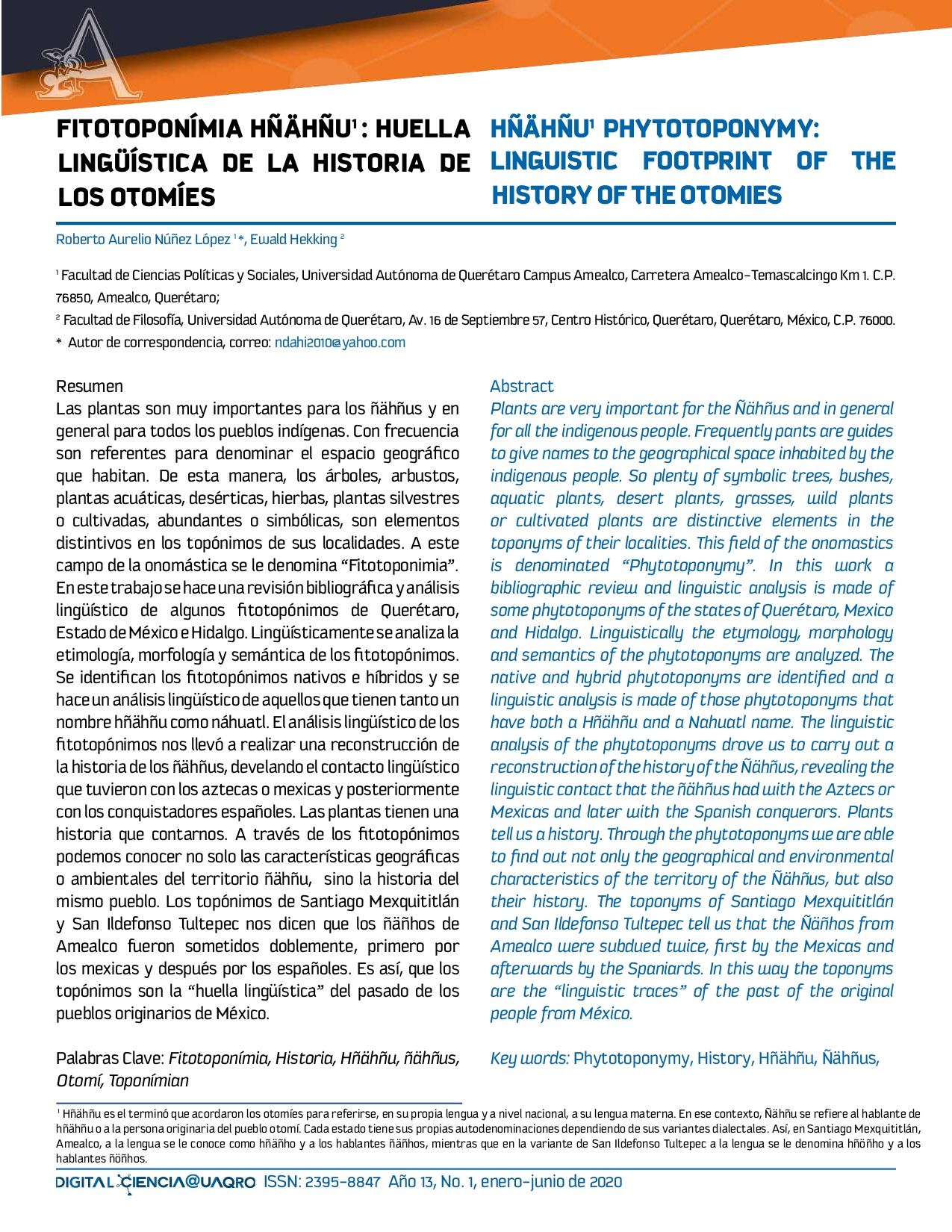Abstract
Plants are very important for the Ñähñus and in general for all the indigenous people. Frequently pants are guides to give names to the geographical space inhabited by the indigenous people. So plenty of symbolic trees, bushes, aquatic plants, desert plants, grasses, wild plants or cultivated plants are distinctive elements in the toponyms of their localities. This field of the onomastics is denominated “Phytotoponymy”. In this work a bibliographic review and linguistic analysis is made of some phytotoponyms of the states of Querétaro, Mexico and Hidalgo. Linguistically the etymology, morphology and semantics of the phytotoponyms are analyzed. The native and hybrid phytotoponyms are identified and a linguistic analysis is made of those phytotoponyms that have both a Hñähñu and a Nahuatl name. The linguistic analysis of the phytotoponyms drove us to carry out a reconstruction of the history of the Ñähñus, revealing the linguistic contact that the ñähñus had with the Aztecs or Mexicas and later with the Spanish conquerors. Plants tell us a history. Through the phytotoponyms we are able to find out not only the geographical and environmental characteristics of the territory of the Ñähñus, but also their history. The toponyms of Santiago Mexquititlán and San Ildefonso Tultepec tell us that the Ñäñhos from Amealco were subdued twice, first by the Mexicas and afterwards by the Spaniards. In this way the toponyms are the “linguistic traces” of the past of the original people from México

This work is licensed under a Creative Commons Attribution-NonCommercial 4.0 International License.

